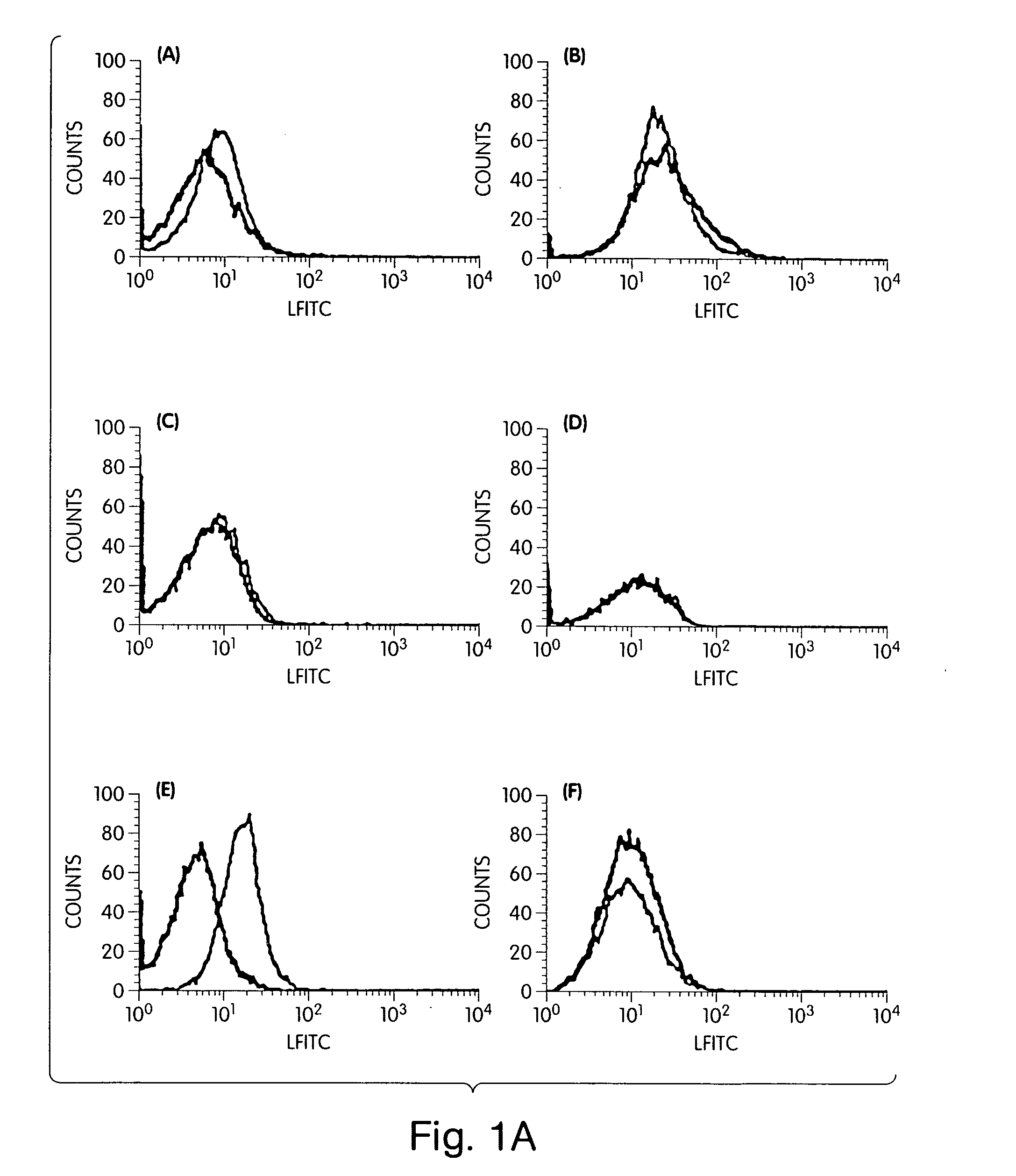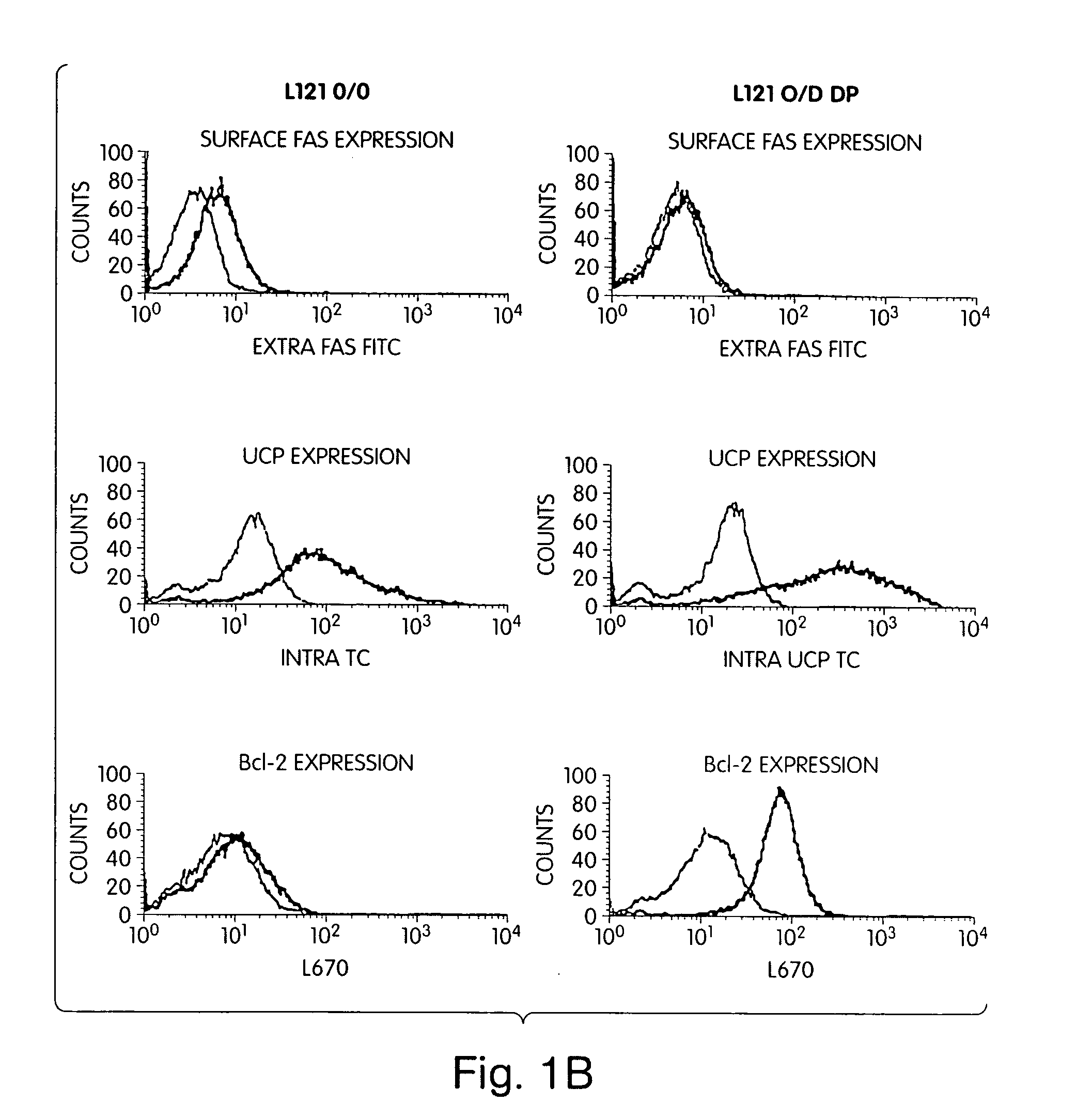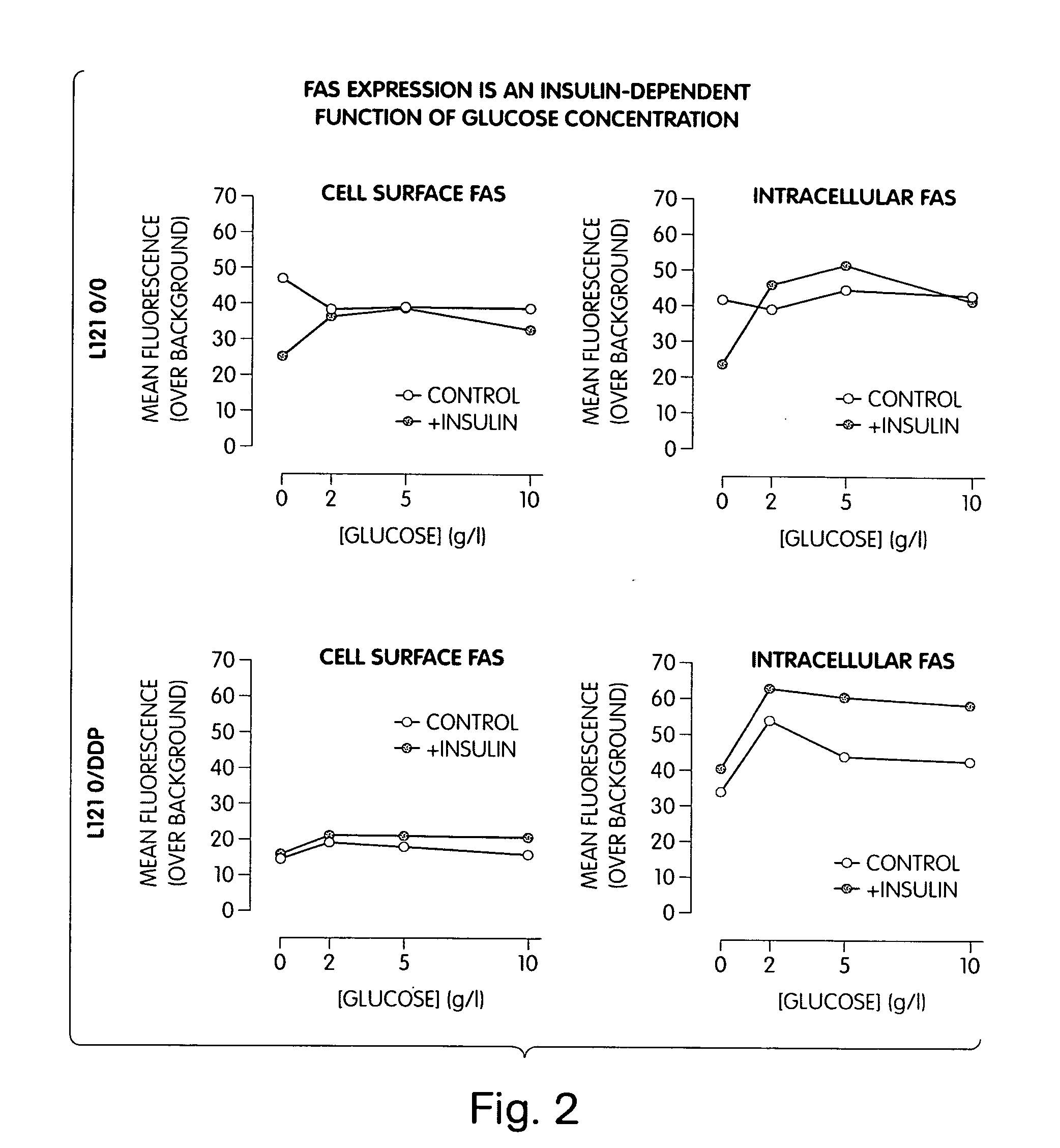Methods and products related to metabolic interactions in disease
a metabolic interaction and disease technology, applied in the field of methods and products related to metabolic interactions in disease, can solve the problems of not always instructing a cell to die, and achieve the effect of inhibiting the ucp function
- Summary
- Abstract
- Description
- Claims
- Application Information
AI Technical Summary
Benefits of technology
Problems solved by technology
Method used
Image
Examples
example 1
Metabolic State of a Cell is Indicative of Cell Surface Fas Expression and Sensitivity / Resistance to Cell Death
[0297] 1. Resistance to apoptosis is characterized by failure to express Fas: The cell lines utilized herein include L1 210, a leukemic cell line; HL60, a human pro-myelocytic cell line; and PC 12, a pheochromocytoma cell line which can be induced to differentiate into a neuronal cell line in the presence of NGF (Lindenboim, L, et al., Cancer Res, 1995, 55:1242-7). Each cell line was examined in parallel with apoptotic resistant sublines: L1210 DDP, HL60 MDR, and PC12Trk. L1210 DDP are resistant to cisplatin and methotrexate; HL60 MDR are resistant to adriamycin induced apoptosis; PC12 TrkA, which have been transfected with TrkA which results in constitutively expression the NGF receptors, are not susceptible to alcohol and NGF withdrawal as are the PC12 cells.
[0298] The apoptosis sensitive cells from each tissue origin were morphologically round, non-adherent, rapidly di...
example 2
Pancreatic B Cells Express UCP and have No Cell Surface fas
[0323] 1. Loss of antigen in β-cell tumors: Proliferation with two responder T cell clones, BDC-2.5 and BDC-6.9, was tested using NOD peritoneal cells as APC and as antigen, either freshly prepared NOD islet cells (control) or β tumor cells, or NIT-1, an established beta tumor cell line from the NOD-RIPTag mouse. Upon harvesting the islet tumors, the β-cells obtained are fully as antigenic as normal NOD islet cells. The NIT-1 line is also antigenic for these T cell clones, but only at low passage numbers; with continued culture, the line changes its morphology and growth kinetics and undergoes complete loss of antigen.
[0324] 2. Response of pancreatic β-cells to glucose: The experiments described below were designed to test the hypothesis that β cell metabolism may be linked to immune recognition and destruction. Glucose utilization was measured as [3H]H2O production from 5-[3H]glucose in normal rat islets. Glucose oxidatio...
example 3
Relationship Between the Metabolic State of a Cell and Expression of MHC Class II Molecules
[0334] 1. Analysis of the Mechanisms of Signaling Through MHC Class II Molecules
[0335] i. Perturbation of Class II on Resting B Cells Results in the Generation of cAMP.
[0336] Early studies demonstrated that ligation of IE molecules on resting B cells resulted in the rapid generation of intracellular cAMP in those cells (Cambier, et al.,Nature (1987). Based on this observation and on our more recent evidence that elevated levels of cAMP correlate with death in resting B cells, we have studied the generation of cAMP in more detail. These data are compiled in FIG. 8, panels A, B, C, and D. The data in this figure allow a comparative analysis of alterations in levels of cAMP as induced by antibodies to IE, FIG. 8, panels A and B; mAb to IA (From ATCC), FIG. 8, panels C and D. In FIG. 8B, cells were stimulated with antibodies to MHC class I (From ATCC) , with anti-Ig (Jackson Immunochemicals) an...
PUM
| Property | Measurement | Unit |
|---|---|---|
| pH | aaaaa | aaaaa |
| temperature | aaaaa | aaaaa |
| concentration | aaaaa | aaaaa |
Abstract
Description
Claims
Application Information
 Login to View More
Login to View More - R&D
- Intellectual Property
- Life Sciences
- Materials
- Tech Scout
- Unparalleled Data Quality
- Higher Quality Content
- 60% Fewer Hallucinations
Browse by: Latest US Patents, China's latest patents, Technical Efficacy Thesaurus, Application Domain, Technology Topic, Popular Technical Reports.
© 2025 PatSnap. All rights reserved.Legal|Privacy policy|Modern Slavery Act Transparency Statement|Sitemap|About US| Contact US: help@patsnap.com



